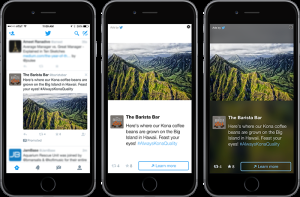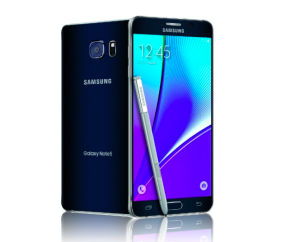 Wow, between back to school (YAY!) and participation trophies to the Ashley Madison leak to Amazon’s culture catastrophe, it’s been a week chock FULL of opinionated debate and differeing opinions. Honestly, it’s everything I love about the Internet (well, Facebook I guess, which is where I always manage to find seriously good discussions with people.) There are many things I don’t love about our always-on, real time news cycle, but what I enjoy more than about most anything are conversations with smart people who make me think. I’m fortunate to be surrounded by people who do just that.
Wow, between back to school (YAY!) and participation trophies to the Ashley Madison leak to Amazon’s culture catastrophe, it’s been a week chock FULL of opinionated debate and differeing opinions. Honestly, it’s everything I love about the Internet (well, Facebook I guess, which is where I always manage to find seriously good discussions with people.) There are many things I don’t love about our always-on, real time news cycle, but what I enjoy more than about most anything are conversations with smart people who make me think. I’m fortunate to be surrounded by people who do just that.
Let’s dive into what you might have missed last week in the world of digital tech and marketing.
Here is the latest edition of “Things You Need To Know This Week.”
Where Do Digital Buyers Go First?
Shoppers are smart. And as much as we marketers like to think we have the upper hand, you and I both know that when we’re in the market to make a purchase, we usually also know where we want to go, online, to research and/or make that purchase. And a new study bears this out.
Nearly two-thirds of digital buyers in the U.S. said they started with marketplaces like eBay, Amazon, or Etsy, where they could search through a wide variety of goods from various sellers, and nearly half said they go directly to their favorite retail stores’ websites..
Digging further into this research from PYMNTS.com and Amazon Payments, it also appears that social was a less popular starting point among digital buyers. In fact, according to MarketLive, organic search is the largest single driver of traffic to U.S. retail e-commerce sites. I that find interesting, but not surprising. Although I see a lot of peer support and word-of-mouth referrals (or warnings) in the social media space, but I personally don’t rely on that information for purchase decisions. I place as much credence and rely more heavily on reviews in my purchase journey than I do on the social media space. What about you?
Bricks-and-Mortar Remains Tops For Clothing Shoppers

via eMarketer
In a recent study by ad tech company Fluent, price and comfort rank first and second for clothing shoppers, with 55 percent of those surveyed reporting that they do their clothes shopping in a physical store, with only 21 percent ordering online. Hang onto your seats—women were more likely than men venture out to the store to buy, while males were slightly more likely to check out online.
Anyone who’s been shopping with a wife, girlfriend, partner, mother, whatever, will NOT find these statistics surprising. With today’s insane vanity sizing trend in ladies’ apparel, it usually takes four or five tries before we find something that fits right, and looks good. I can’t imagine buying pants, for example, online, without being able to try them on.
Retail sales are also at an all time high, according to the U.S. Department of Commerce, with clothing and accessories coming in last year at $253.59 billion. Great news for retailers, not so great for our pocketbooks.
Internet of Things
Consumers Warm Up to Smart-Home Devices
Privacy fears aside, it appears that Americans are adopting smart-home technology in greater and greater numbers. A recent study from Coldwell Banker Real Estate and CNET, conducted by The Harris Poll, found 28 percent of U.S. Internet users are smart-home technology owners, with those early-adopting Millennials leading the way at 47 percent. Not surprisingly, a healthy household income over $100,000 or having children under 18 at home were key factors in smart home device adoption.
And what do people want from their smart home technology? They want their homes to be safe and they want them to be efficient. According to an emarketer.com article, “April 2015 polling by Icontrol Networks found that connected home cameras and thermostats were the connected/smart-home devices that Internet users in North America were most likely to purchase in the next 12 months, each cited by 37%. About one-third were interested in connected lighting, connected door locks, or smart-home hubs, while 31% found smart-home services appealing and 25% connected appliances.”
And if you’re selling these devices, and looking to get the non-users onboard? Lower costs, low bolls, and more information about how the technology actually works is what they’re looking for. Hellooo, content marketing!
Millennials
Millennials Love Mobile Banking

via eMarketer
I bank on my phone all the time. And my laptop. In fact I can’t recall the last time I physically entered an actual bank. And Millennials, it appears, agree. According to an eMarketer study, Millennials are adopting and using mobile banking at a much higher rate than their parents and grandparents, “with almost 59 percent of 18-to-34-year-old mobile phone users in the U.S. accessing their bank, credit card, or brokerage account via a mobile browser, app or SMS at least once a month.”
“Having real-time mobile access to personal financial information is a baseline expectation among Millennials today, which helps explain why this cohort comprises the largest share of U.S. mobile banking users. But many baby boomers still haven’t made the jump. Marketing and education around the security aspect of mobile financial access could help move the needle with adoption among the baby boomer audience.” said eMarketer analyst Bryan Yeager.
“With a growing mobile phone banking user base on track to reach more than half the U.S. adult population by 2019, more banks and other financial firms are treating their apps and sites as the primary point of engagement with customers. They’re also experimenting with ways to cross-sell other relevant financial products, upsell to premium services and even acquire new customers entirely through the mobile channel,” added Yeager.
The financial industry is finally starting to take notice, and making more and more moves to incorporate digital into their offerings.
Mobile
Mobile Set To Dominate The Holiday Season
Ack! Did I just say “the holidays?” It’s hard to believe, but yes, they are just around the corner. And as mobile continues its climb to dominance, it seems more holiday shoppers will be using smartphones and tablets to do their holiday shopping research.
According to recent polling by Signal, over two-thirds of U.S. adult Internet users planned to research purchases more often via their smartphones and tablets this holiday season as compared to last year, with 60 percent planning to increase their mobile holiday buying activity.
And, in the true spirit of the holidays, 80 percent of respondents admitted being on the lookout for something nice for themselves, as well as their loved ones. No wonder retail sales are at an all time high! Mobile is still lacking slightly when it comes to finalizing actual purchase transactions (because many retailers still haven’t figured out how to serve up a quick and easy mobile experience), with the desktop computer being number one for holiday gift buying, and retail stores coming it at number two.
And buyers will always want the same thing, no matter where they are when making a purchase decision – they want deals and a personalized shopping experience, online or off.
Facebook Repositions ‘Notes’ as a Full Fledged Blogging Platform
Is Facebook poised to become the new “Medium?” The popular blog-publishing platform was launched in 2012 by Twitter co-founders Evan Williams and Biz Stone, and according to some in the space, Facebook’s new Notes relaunch looks surprisingly similar. Yes, you heard me right. Notes are back. According to Facebook, the company is “testing an update to Notes to make it easier for people to create and read longer-form stories on Facebook.” The new update includes the ability to add a cover photo and resize photos, which makes a “note” feel more like a traditional blog post than what it used to be, a really, really long-winded status update.
Like LinkedIn before it, Facebook appears to be making a play at the lucrative blogging market, and hoping to convince users to post directly to the platform, rather than linking to other blog content, and sending users away. One nice element? A commenting system built right in.
As with other areas of Facebook, you can choose your own privacy settings, and share notes with everyone, only your friends, just yourself, or a create a custom list. The new Notes feature is currently being tested with a small group of users. There’s no word when this feature will make its way to all users. This will be interesting to watch, for sure.
Twitter Expands Its Ads Program

via TechCrunch
It certainly feels like Twitter is casting about on pretty much daily basis to add something to its service offerings. Their latest? The Twitter Audience Platform, which is comprised of several new features for advertisers who want their campaigns to go beyond Twitter itself.
According to a recent piece on techcrunch.com, “Twitter says advertisers no longer have to focus on drive mobile app installs or re-engagements — they can also set an objective to drive tweet engagements or video views. To support that, Twitter is also introducing new ad formats, with tweet engagement campaigns automatically transformed into interstitial and native ads in other apps, and Promoted Video campaigns becoming video ads. When you see these ads, you’ll have the ability to retweet or favorite them, directly in the ad unit. Taken as a whole, these changes mean Twitter’s network could become more appealing to a broader group of advertisers.” We’ll watch with interest to see how this performs for advertisers.
YouTube
Samsung Introduces ‘Live Broadcast,’ a New Periscope-like Live Video Streaming Service

via Venture Beat
Live streaming is all the rage, and the market’s heating up for other companies to get on board. Samsung, no slouch in the digital innovation department, has just announced a Periscope-like live video service called Live Broadcast, a service that accompanies their latest big-screen smartphone releases. A user can shoot video with the S6 Edge Plus or Note 5 camera and stream the video live to another phone, tablet, or desktop computer. The live video stream can go out to an individual, a group of contacts, or even to the public through YouTube Live.
Samsung inserts a seven second delay into the video stream (much like profanity delays in radio and TV) in case the user happens to film something they don’t want to broadcast. The Note 5 or Edge Plus user can notify others of a broadcast by sending them a YouTube link.
It will be interesting to see if Live Broadcast puts a dent into the phenomenal growth of existing live video streaming apps like Periscope and Meerkat, since it will not require the user to download and install a separate app.
Instagram Switches On Ad API. Will Users Revolt?
And with the metaphorical click of a button, Instagram officially entered the online fray as an online advertising giant. Due in part to the new API for ads, Instagram’s current mobile ad revenue of $595 million a year is expected to increase to $2.8 billion by 2017, surpassing the likes of Twitter and Google in the U.S. market. That’s a staggering sum and one that has the visual social site poised to leave Twitter and Google in the dust when it comes to ad dollars.
The big question we’ve all been asking is will the introduction of ads turn off Instagram’s dedicated users and encourage those users to migrate to apps like Snapchat? Instagram is hoping that by rolling out ads gradually, it will stem any backlash among its dedicated user base of over 300 million.
For marketers, this means that Instagram is finally open for business. The network offers a unique blend of substance and style, Facebook-powered analytics plus fashion magazine look and, most important, it’s mobile, in fact it’s mobile only! This is a key factor, since 75 percent of Facebook’s revenue comes from mobile-based advertising.
The good people over at recode.net put it best: “With Instagram’s new API offering, ads can now be purchased by just about anyone, using online ad-buying tools offered by official Instagram partners. The move has been called “one of the most anticipated moments in the evolution of advertising.” Well played, Instagram.
Miscellaneous
If Call Center Employees Were Honest
What Happens to Your Checked Luggage at the Airport
photo credit: Busch Jäger via photopin (license)

